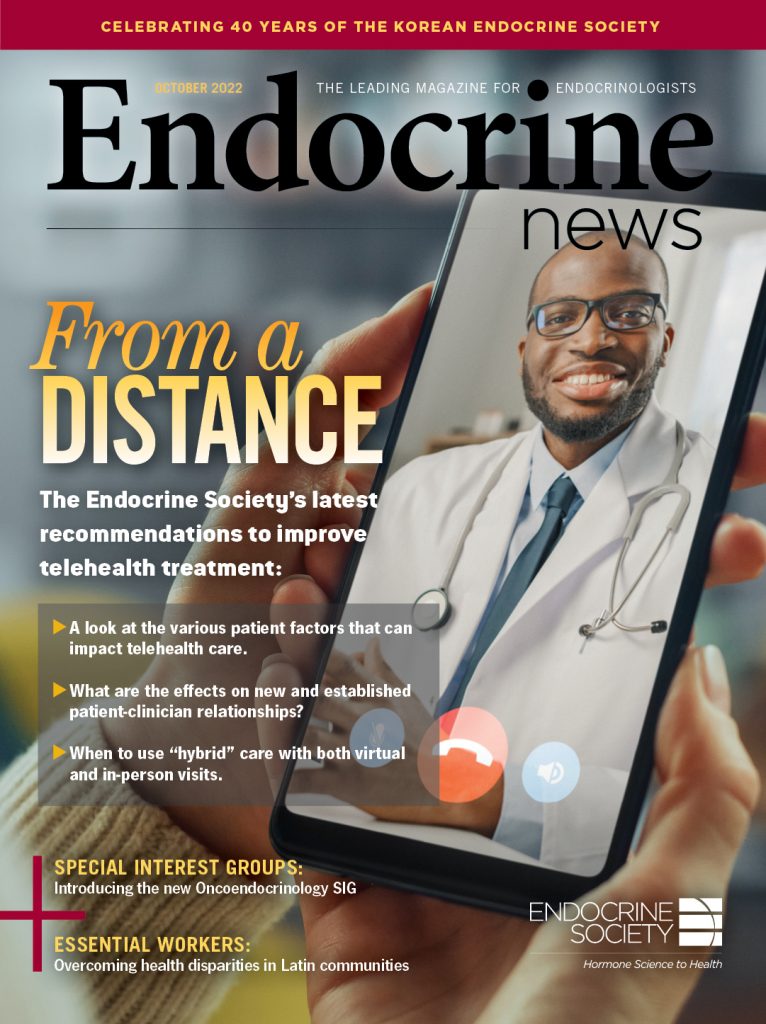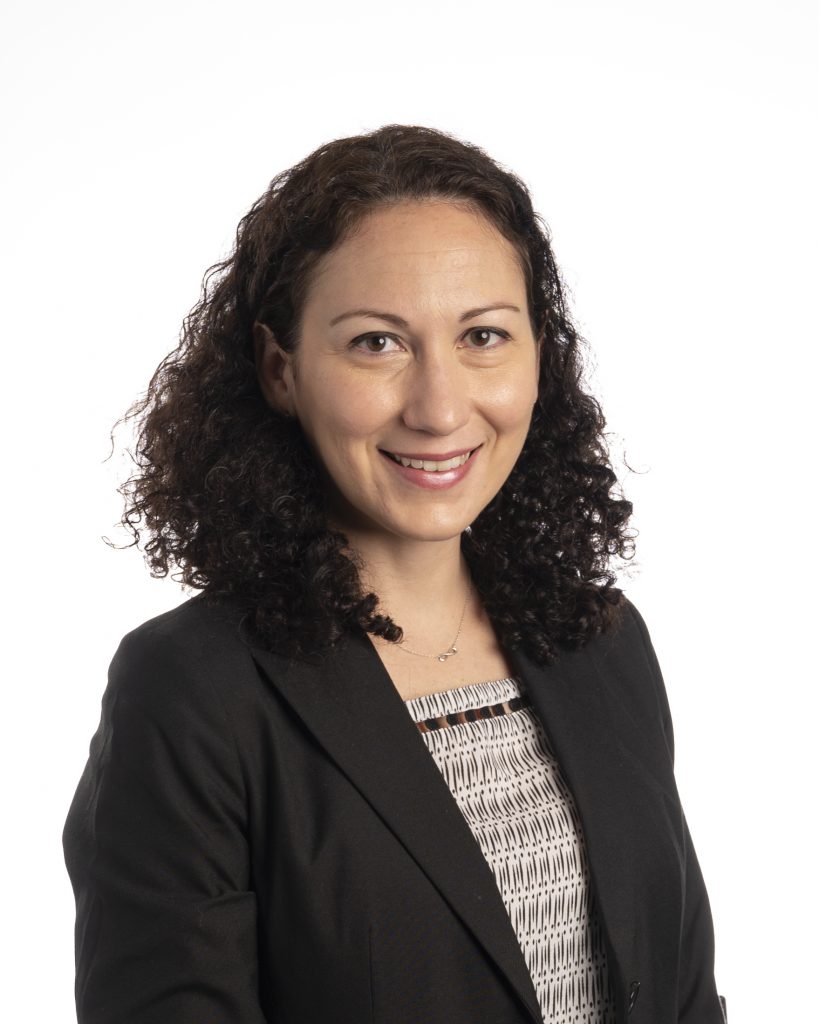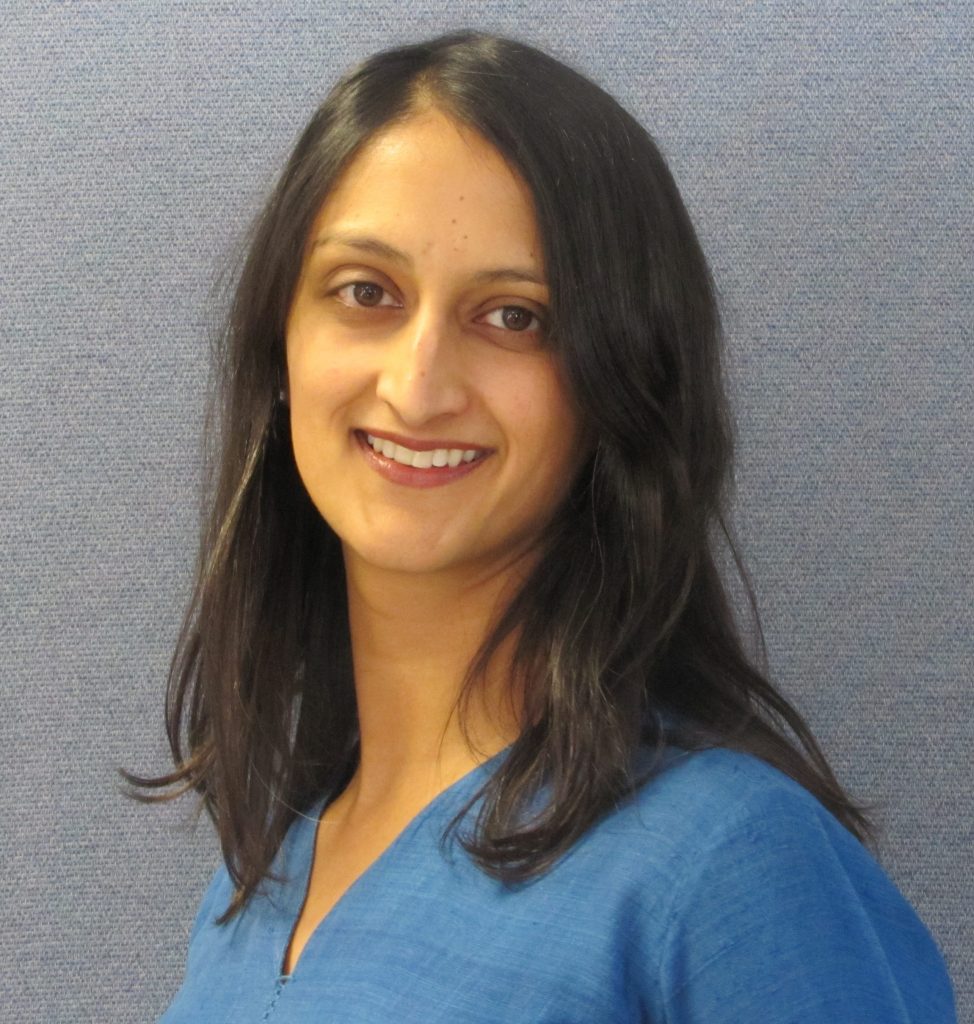
This month, The Journal of Clinical Endocrinology & Metabolism is publishing “Appropriate Use of Telehealth Visits in Endocrinology: Perspective Statement of the Endocrine Society.” Since this new modality is here to stay, Endocrine News talks to the authors about which patients are better candidates for telehealth than others, why endocrinology seems tailor-made for this new modality, as well as their own experiences as virtual caregivers.
Telehealth visits are now spreading rapidly and becoming a mainstay and have become especially important for endocrine care. Healthcare providers need to consider a variety of factors when determining which type of visit best serves an individual patient’s needs at a given moment. For many patients, scheduling a mixture of in-person and telehealth visits can make medical care more convenient and effective.
But because this technology is still relatively new and has had to keep pace with the rapid spread of the COVID-19 pandemic, there is still little data on the appropriate use of telehealth. To address that knowledge gap, the Endocrine Society convened an expert panel to provide guidance to clinicians on how to evaluate when it’s best to see patients virtually or in person, and the panel recently published a policy perspective in The Journal of Clinical Endocrinology & Metabolism.
The perspective lays out the spectrum of considerations and how they may each impact quality of care, and it provides a figure that may help to guide decision making. It also points out that a combination of telehealth and in-person can be used to provide needed care over time, and that one should reassess the care modality at each visit and accounting for patient preferences. Finally, the perspective lays out clinician-level approaches to overcoming challenges to telehealth that might otherwise contribute to disparities in access to this modality of care.
“Telehealth has revolutionized healthcare delivery and is here to stay in some form or another, regardless of the form that telehealth policy and reimbursement models take after the public health emergency,” says Varsha Vimalananda, MD, MPH, a clinical scientist at the U.S. Department of Veterans Affairs in Arlington, Mass., and lead author of the policy perspective. “The benefits are incredible in terms of increasing access to care, so we need to figure out how we incorporate telehealth thoughtfully and in a way that advances high-quality endocrine care for all our patients. In prior work, my research group found that endocrinologists are doing their best to figure out what situations are most appropriate for telehealth versus in person but are also clamoring for guidance.”
Vimalananda goes on to point out that clinical practice guidelines cannot be developed for situations like telehealth, since the evidence for or against its use is still in a relatively early stage of development. As such, the panel comprises endocrinologists with expertise in telehealth clinical care, telehealth operations, patient-centered care, healthcare delivery research, and/or evidence-based medicine. Where evidence was lacking, the panel drew on their expert opinions and experiences.
Ideal for Endocrinology
The authors of the policy perspective write that endocrinology is especially pertinent to telehealth since patients with endocrine conditions can often be seen virtually. “Even conditions that require frequent visits – such as newly initiated insulin therapy or diabetes mellitus treatment in pregnancy – can be appropriately managed via telehealth with remote access to [patient-generated health data (PGHD)],” they write.
“We often just need the patient’s history and their lab results, and we can have a very effective discussion through telehealth, so I believe endocrinologists are very well-suited for telehealth,” says Spyridoula Maraka, MD, MS, an endocrinologist with the University of Arkansas for Medical Sciences and the Central Arkansas Veterans Healthcare System in Little Rock, and co-author of the JCEM policy perspective. “I think telehealth visits will continue to be an essential part of endocrine care and we need some guidance.”

“It is essential that we facilitate access to telehealth for all patients who may benefit, while continuing to explore and define how it can be used most appropriately and effectively within our specialty.”
Stephanie Crossen, MD, assistant professor of medicine, University of California Davis, Sacramento, Calif.
Vimalananda cares for a population of older veterans, and she says that many of her patients have trouble getting to their appointments. She says that for clinical situations that are straightforward – such as an adjustment of a levothyroxine dose – a 10-minute visit in the clinic doesn’t seem warranted. “Some of those patients deeply appreciate being able to have a telehealth visit,” she says. “I miss seeing some of those patients in person, but I have to push myself to answer whether the lack of in-person interaction is actually impacting the quality of care they are receiving. If it’s not, and patients are willing to let that in-person interaction go, then I just have to accept that. Other patients would still prefer to come in – and of course that’s never disallowed. I also have a low bar for asking telehealth patients to come in person if I am concerned about something I need to assess more closely, even if I can’t quite put my finger on it.”
Stephanie Crossen, MD, is a pediatric endocrinologist and professor of Medicine at the University of California Davis in Sacramento, Calif., and a co-author of the policy perspective. She says that telehealth has been a lifeline for patients who otherwise would have not received endocrine care during challenging time periods. “This includes not only the COVID-19 pandemic but also other circumstances causing relocation, homelessness, or lack of transportation such as wildfires, domestic violence, mental illness, and financial insecurity,” she says. “Telehealth has enabled me to stay in contact with them and continue providing care during these crises, which has been invaluable. For this and other reasons, it is essential that we facilitate access to telehealth for all patients who may benefit, while continuing to explore and define how it can be used most appropriately and effectively within our specialty.”
Leslie Eiland, MD, an associate professor of medicine at the University of Nebraska Medical Center in Omaha, echoes that sentiment. “Many of my patients live in rural areas, multiple hours from the nearest endocrinologist. I find that many love the option of telehealth, and are choosing more of a hybrid model, asking to alternate in person visits with telehealth visits,” she says. “For unexpected or last-minute issues that arise – like childcare conflicts, illness, or severe weather – it’s been so nice to offer to keep the previously scheduled appointment but convert to telehealth, instead of reschedule them further out.”
Age-Related Paradox
But there are still many things that need to be ironed out, barriers that need to be broken down. Telehealth has the potential to help form a more equitable healthcare system, with the addition of some systemic changes such as more accessible and affordable broadband internet and mobile devices and changes in reimbursement policies. Insurance remains a barrier for some. The authors point out that data suggests telehealth visits can even be outright inaccessible for minorities, those who don’t speak English, or who have fewer socioeconomic resources. “This policy perspective doesn’t only refer to clinicians; it refers to all stakeholders, including policymakers and healthcare organizations,” Maraka says. “Equity considerations have to be in everyone’s mind.”

“Telemedicine still requires focused efforts on improving technology availability, clinical staff training, cohesive workflow designs, integration into fellowship training for future specialists, uniform reimbursement policies, and attention to promoting equity for all. When all healthcare members come together in rhythm and are in sync, with a shared sense of responsibility, telemedicine will continue its sustainability, success, and advance forward.”
Radhika Rao Narla, MD, associate professor of medicine; VA site director, Endocrinology Fellowship Program; assistant program director, Sub-specialty medicine, University of Washington Internal Medicine Residency Program; Seattle, Wash.
Maraka tells Endocrine News that limited studies have shown that older patients had reduced access to telehealth, which created a bit of a paradox: During COVID-19, it was safer for older patients to stay at home rather than go to the clinic, but they had the least access to telehealth. She suggests clinicians encourage their older patients to have a grandchild or someone else more proficient in this technology help them get set up for a virtual visit. “We need to have all this in mind. And on the clinician level, perhaps do what we can in our practice to address this,” she says. “Be proactive. Of course, a lot of things will go beyond the individual level and that’s where these stakeholders come in.”
Weighing Patient Circumstances
The authors of the JCEM paper point to other barriers that would make telehealth an appropriate and attractive option, barriers that might have recently arisen, or haven’t been closely examined. For instance, gender diverse patients who feel like they face stigma in the clinic may opt for telehealth visits to feel more comfortable. Patients with mental health problems like severe anxiety or agoraphobia would probably benefit more by talking to their doctors on screens in their homes.
Vimalananda sees several transgender patients who are physically well and live close enough to the clinic. She says that among this group, some love to come in and see her, and some prefer telehealth. Their treatments are straightforward and similar, but their preferences for in-person visits or virtual ones vary. “The [patients] who love to come in seem to appreciate sitting in the same room, and we often have conversations that extend past the hormones and their effects to the experience of being a transgender person in general (I learn a lot from these conversations) and other aspects of life,” she says. “They value the relationship and trust that we have developed through in person interactions. Some of those who prefer telehealth find it more convenient, but others prefer it because they are uncomfortable in the clinic waiting room due to feeling stared at.”
Maraka is also a clinician at the VA, where a lot of the patients who have endocrine disorders also have mental health needs. Patients who have post-traumatic stress disorder can get anxious in crowded or public places, compounded by a fear of catching an infection that could further deteriorate their health. “We definitely wanted to emphasize that telehealth might be a great solution for patients that have these mental health issues, as now, they don’t really need to leave the comfort of their home to receive care,” she says.
But the authors are careful to look at this from the other side as well. Privacy can be a concern; if patients don’t want family members in their home to know that they are suffering with health issues, they may not want to discuss them with their doctors if those family members are in the next room. “As a clinician, you might think that a certain patient would prefer telehealth, but you might not know the full story,” Maraka says. “That’s something else that we need to have in mind.”

“During the time when interstate telehealth was permitted, being able to follow with out of state young adults was tremendously beneficial for continuity of care.”
Rayhan Lal, MD, assistant professor of medicine and pediatrics, Stanford University, Palo Alto, Calif.
Vimalananda says that one of her transgender patients who prefers telehealth made a shocking declaration that enlightened the expert panel who wrote this policy perspective: “I had one patient tell me they’d get their hormones off the street if they had to come into the clinic. That group of patients is better able to develop a trusting relationship with me because they are able to feel safe during their visit via telehealth.”
“That story illustrates one reason why the expert panel did not deem any clinical situation always or never appropriate for telehealth,” she continues. “It is a combination of circumstances that the clinician has to weigh and combine with knowledge of patient preference. Our goal was to illustrate that list of circumstances so that key ones don’t get left out of the decision-making process.”
Telehealth: Here To Stay
It’s not hyperbole to say that the world changed in early 2020; healthcare needed to pivot with it. Telehealth has expanded dramatically since then, the authors write, and additional research is needed to investigate the benefits and limitations of this modality. “With the COVID pandemic, we started utilizing telehealth more often in endocrinology. It has been very clear that telehealth is here to stay,” Maraka says. “The thing is that there is very limited data about the impact of telehealth visits on medical and other outcomes, so we felt that the clinicians will need some guidance of how to appropriately use telehealth in their practice.”
As it stands, there are still many open, unanswered questions that surround telehealth, so the authors of the policy perspective identified specific areas in need of future investigation: clinical factors (whether an in-person physical exam is needed); patient factors (distance to clinic, access to transportation, family or work obligations); patient-clinician relationship; clinician factors; and healthcare setting and technology (availability of telehealth infrastructure needed to provide care).
Radhika Rao Narla, MD, a clinical endocrinologist VA Puget Sound Health Care System, associate professor of Medicine at the University of Washington in Seattle, and a co-author of the policy perspective says that telehealth has its highlights and victories, but there is much more work to be done. “For example,” she says, “a group paddling a canoe will highlight the concerted timing, teamwork, and rhythm that are necessary to move the canoe. Telemedicine still requires focused efforts on improving technology availability, clinical staff training, cohesive workflow designs, integration into fellowship training for future specialists, uniform reimbursement policies, and attention to promoting equity for all. When all healthcare members come together in rhythm and are in sync, with a shared sense of responsibility, telemedicine will continue its sustainability, success, and advance forward.”
“We need data on telehealth on clinical outcomes, cost, patient and clinician satisfaction, and implementation, and health equity,” Vimalananda says. “Studies should account for various stakeholder perspectives – patients, caregivers, clinicians, institutions, and payers. Questions that clinicians are particularly bothered about are what happens to the patient-clinician relationship over time, the value of the physical exam in different situations, the possibility of ‘missing something’ due to the inability to see the whole person well or lay on hands via telehealth, and the effect of telehealth on clinician satisfaction and burnout.”

“At the end of the day, clinicians need to read through this and then use their judgment and see how they can use this information to shape their own practice; then they can make the use of telehealth as effective as possible for their patients.”
Spyridoula Maraka, MD, MS, endocrinologist, University of Arkansas for Medical Sciences and the Central Arkansas Veterans Healthcare System, Little Rock, Ark.
Vimalananda goes on to say that the panel thinks the onus will be on researchers to determine appropriateness of telehealth, and they advocate for a range of outcomes to be evaluated in single studies, since studies might demonstrate a negative result on one outcome but positive results on others that are central to high-quality care. “There are also concerns hard to overcome about selection bias in observational studies, but quasi-experimental designs help to mitigate these,” she says.
Endocrinologists Leading the Way
For now, the Society continues to advocate for universal access to broadband and telehealth-capable devices, coverage of telehealth services by all medical insurances, and either national licensing agreements or redefinition of site-of-care as the clinician location to facilitate telehealth across state borders, all of which would be enormous strides toward health equity addressing the endocrine workforce shortage.
Rayhan Lal, MD, a clinical endocrinologist and assistant professor of Medicine at Stanford University in Palo Alto, Calif., and another co-author of the policy perspective, says that his experience with telehealth has been extraordinarily positive and can speak to the benefits of allowing telehealth visits across state lines. “No risk of spreading COVID-19 to vulnerable populations, reduced commute for everyone with reduced emissions, no parking fees, no delays in starting a visit, getting to observe an individual’s home environment and being able to immediately see my family at the end of clinic,” he says. “During the time when interstate telehealth was permitted, being able to follow with out of state young adults was tremendously beneficial for continuity of care.”
“I will also point out that health equity can be promoted at the clinician level in the ways that we can sometimes modify our practices to overcome patient factors which may otherwise serve as a barrier to care,” Vimalananda says. “The expert panel lists several of these strategies in the perspective.”

“Telehealth has revolutionized healthcare delivery and is here to stay in some form or another, regardless of the form that telehealth policy and reimbursement models take after the public health emergency. The benefits are incredible in terms of increasing access to care, so we need to figure out how we incorporate telehealth thoughtfully and in a way that advances high-quality endocrine care for all our patients.”
Varsha Vimalananda, MD, MPH, a clinical scientist at the U.S. Department of Veterans Affairs, Arlington, Mass.
“At the end of the day, clinicians need to read through this and then use their judgment and see how they can use this information to save their own practice; then they can make the use of telehealth as effective as possible in their practice,” Maraka says.
Vimalananda says she’s glad to be a member of the Endocrine Society, as it’s actively conducting intensive advocacy around this issue in Congress, especially since endocrinology is one of the specialties with the highest proportion of telehealth visits. “It’s so exciting to now be able to leverage telehealth in provision of endocrine care,” she says. “Our judgments as individual clinicians will continue to be a major determinant of which patients are offered telehealth as we await the accumulation of research data. To ensure our decision making promotes high quality care (patient-centered, equitable, safe, effective, timely, and efficient), we have to think holistically about the factors in play at each visit over time. In this way, we endocrinologists can be leaders among specialties in using telehealth to advance patient care.”
–Bagley is the senior editor of Endocrine News. He interviewed Olympic gold medalist Gail Devers and endocrinologist Eve D. Bloomgarden, MD, in the September issue for the article, “Clearing Hurdles,” that detailed the importance of patients being their own healthcare champions.

